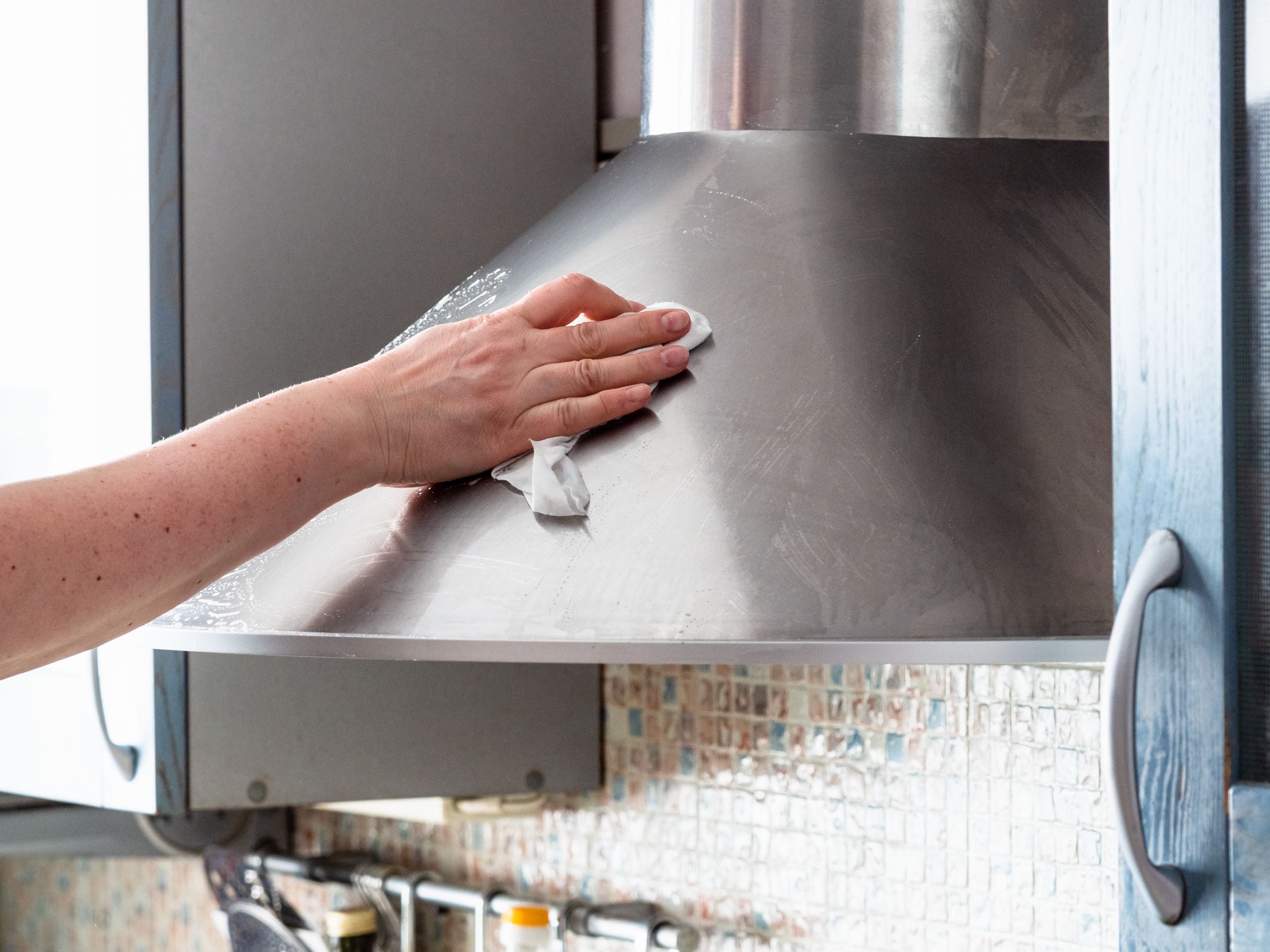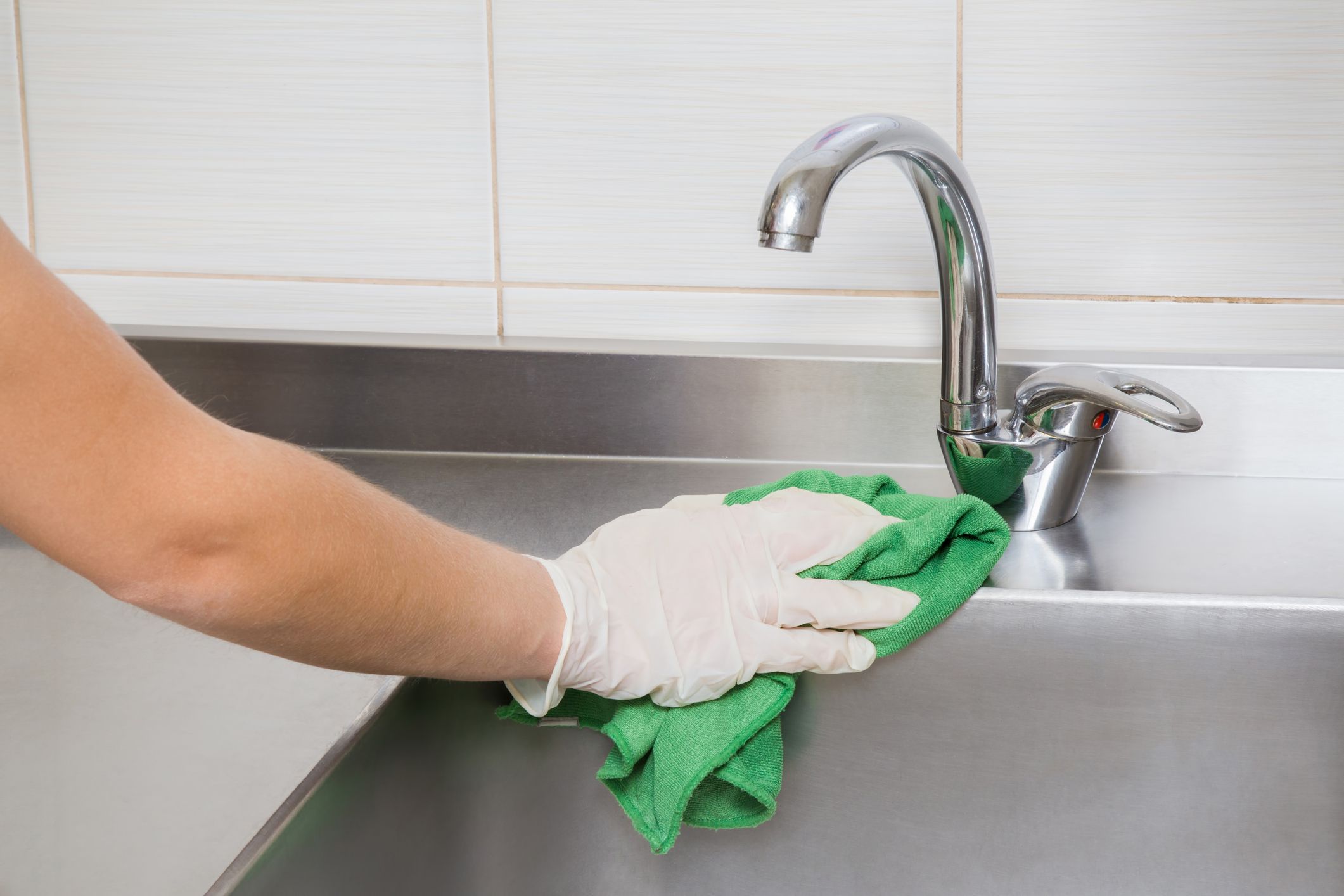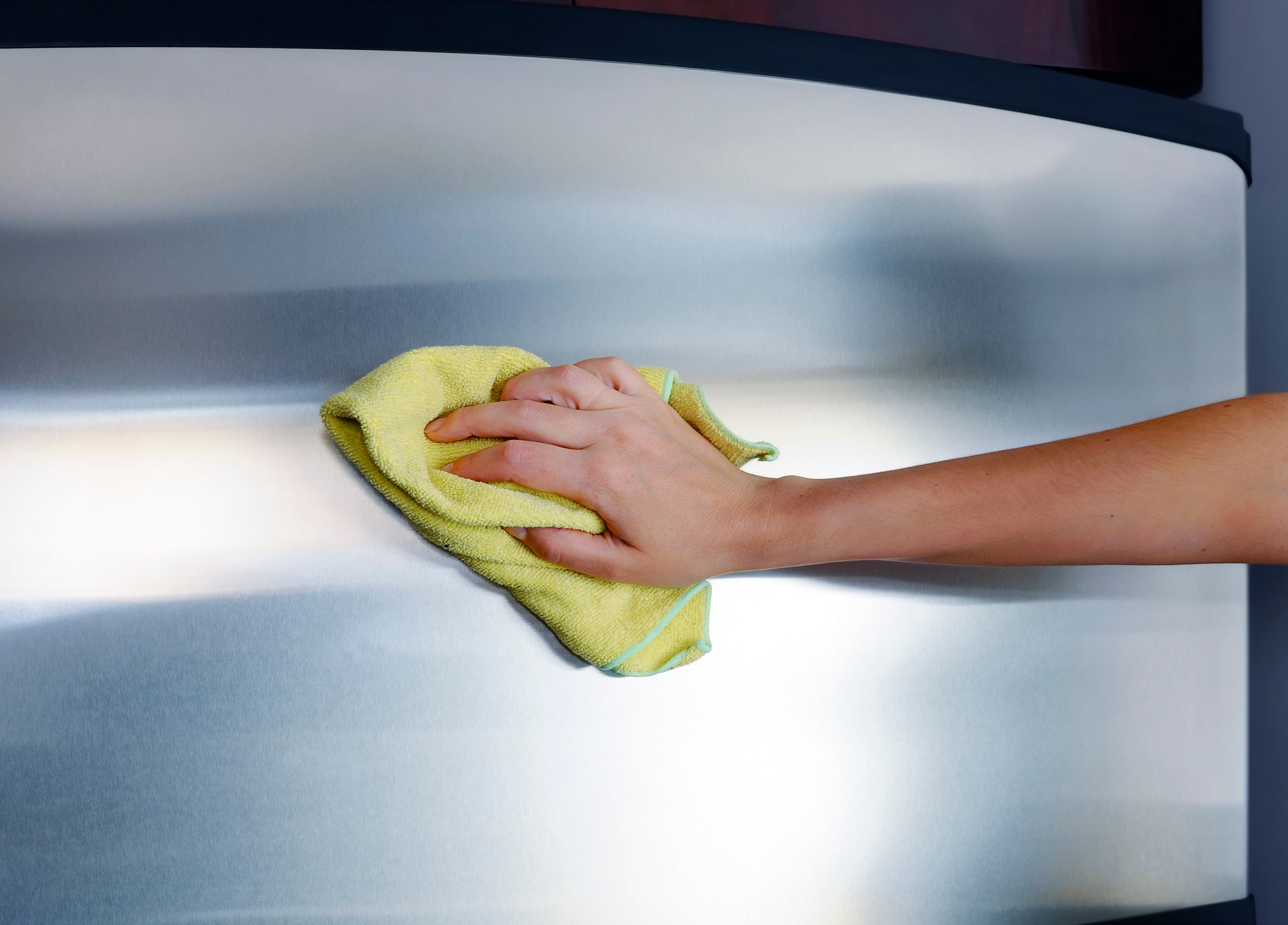CLEANING TIPS
How to Clean Stainless Steel
Published: November 22, 2023
Updated: January 23, 2025


Stainless steel appliances and surfaces have become a staple in modern kitchens. While they're very durable and can keep your kitchen looking sleek and modern, maintaining their pristine appearance requires a bit of care and attention. But doing so is not quite as straightforward as you might think. In this guide, we'll explore the ins and outs of stainless steel care, including how often you should clean it and the ingredients you should avoid.

How Often Should You Clean Stainless Steel?
The frequency of cleaning your stainless steel depends on its use and exposure to elements. In a busy kitchen with high traffic, daily cleaning might be necessary to prevent the buildup of fingerprints, grease, and other contaminants. For less frequently used items, a weekly cleaning routine should suffice.
Four Steps For Cleaning Stainless Steel:
-
Prep the Surface: Wipe away loose debris with a dry microfiber cloth.
-
Dish Soap Solution: Mix a few shakes of Blueland Dish Soap with warm water. Clean the surface using a soft cloth, moving in the direction of the grain.
-
White Vinegar Magic: For tougher stains, create a solution of equal parts water and white vinegar. Apply with a cloth and wipe along the grain.
-
Olive Oil Shine: To add a polished finish, put a few drops of olive oil on a clean, dry cloth and buff the stainless steel surface.

Here's a basic cleaning routine to keep your stainless steel in top condition:
-
Daily Wipe Down: Use a soft, lint-free cloth or sponge with warm water and our Multi-Surface Cleaner to wipe down stainless steel surfaces. This helps to remove surface dirt and prevents the accumulation of grime.
-
Weekly Deep Clean: For a more thorough cleaning, mix a solution of equal parts water and white vinegar or a stainless steel cleaner. Apply the solution with a soft cloth, following the grain of the stainless steel. Rinse with water and dry thoroughly to prevent water spots.
Alternative Ways to Clean Stainless Steel:
Cleaning stainless steel can be done using various methods, depending on the level of dirt or stains. Here are some common methods for cleaning stainless steel:
-
Warm Water and Soap: Mix a few shakes of Blueland Dish Soap with warm water. Apply the soapy solution with a soft cloth or sponge, and then wipe the stainless steel surface.
-
White Vinegar and Olive Oil: Mix equal parts white vinegar and olive oil. Apply the mixture to the stainless steel surface with a soft cloth, rubbing in the direction of the grain.
-
Baking Soda Paste: Make a paste by mixing baking soda with water. Apply the paste to the stainless steel surface, scrub gently with a soft cloth or sponge, and then rinse.
-
Club Soda: Pour club soda onto a soft cloth and wipe the stainless steel surface. This can help remove stains and bring out the shine.
-
Lemon and Salt: Cut a lemon in half and dip the cut side in table salt. Rub the lemon and salt mixture over the stainless steel, focusing on stains or discoloration.
-
Microfiber Cloth: Use a microfiber cloth for regular dusting and cleaning to avoid scratching the surface.
-
Glass Cleaner: Some people find that a glass cleaner can be effective in removing fingerprints and smudges from stainless steel surfaces.
-
Mineral Oil: Apply a small amount of mineral oil to a soft cloth and use it to polish the stainless steel surface.
**Remember to always follow the manufacturer's recommendations for cleaning and maintaining your specific stainless steel product, as some finishes may be more sensitive to certain cleaning agents or abrasive materials. Additionally, always test any cleaning method in an inconspicuous area to ensure it won't cause damage.

Ingredients to Avoid When Cleaning Stainless Steel
While stainless steel is known for its durability, certain cleaning agents can cause damage and diminish its aesthetic appeal. Avoid the following ingredients when caring for your stainless steel:
-
Abrasive Cleaners: Harsh abrasives, such as scouring pads or powders, can scratch the surface of stainless steel, leaving it vulnerable to rust and corrosion. Opt for non-abrasive cleaning tools to preserve the smooth finish.
-
Chlorine and Bleach: Chlorine-containing cleaners and bleach can cause discoloration and damage the protective layer of stainless steel. These chemicals can lead to pitting, which manifests as small, localized corrosion spots.
-
Ammonia-Based Cleaners: Ammonia can dull the shine of stainless steel and cause it to become discolored over time. Choose ammonia-free alternatives to maintain the luster of your stainless steel surfaces.
-
Steel Wool or Wire Brushes: These abrasive tools can scratch the surface of stainless steel, compromising its resistance to corrosion. Stick to soft cloths, sponges, or brushes with nylon bristles for effective yet gentle cleaning.
Caring for stainless steel is a simple yet crucial aspect of maintaining the aesthetic appeal and functionality of your kitchen. By adopting a regular cleaning routine and avoiding abrasive or corrosive cleaning agents, you can ensure that your stainless steel appliances and surfaces remain in pristine condition for years to come. Embrace the art of stainless steel care, and let your kitchen shine bright!

